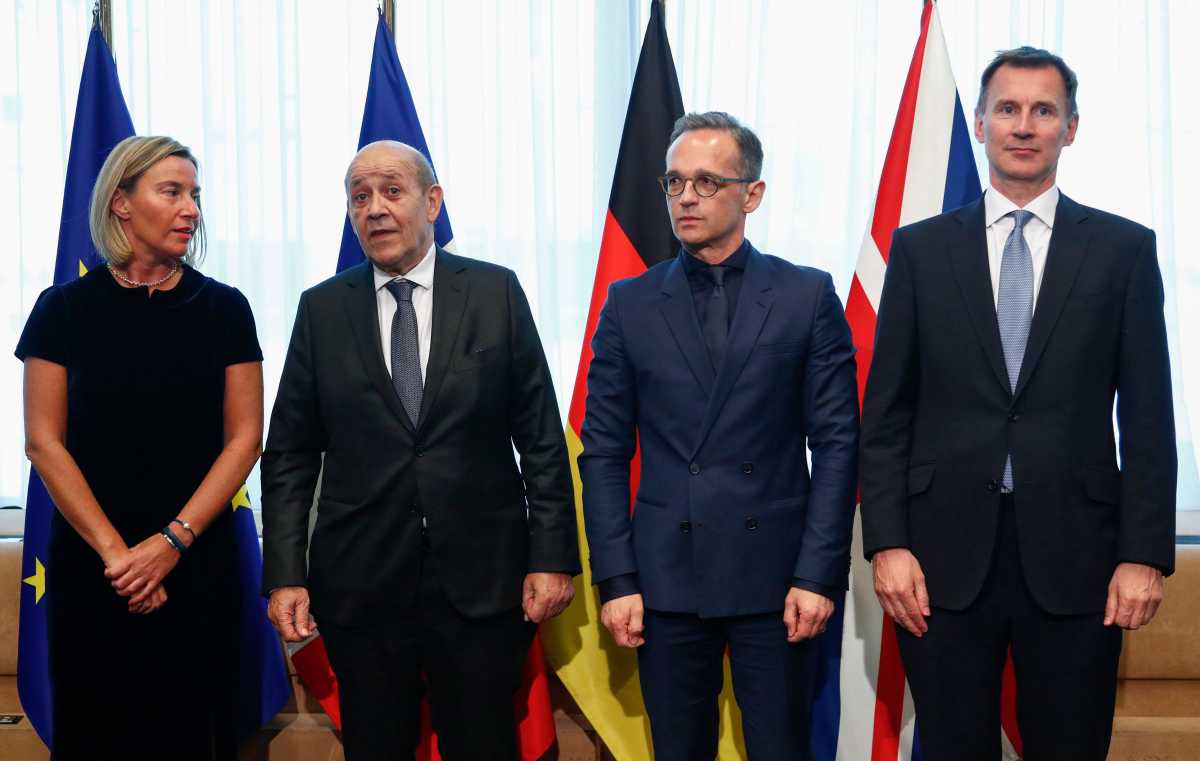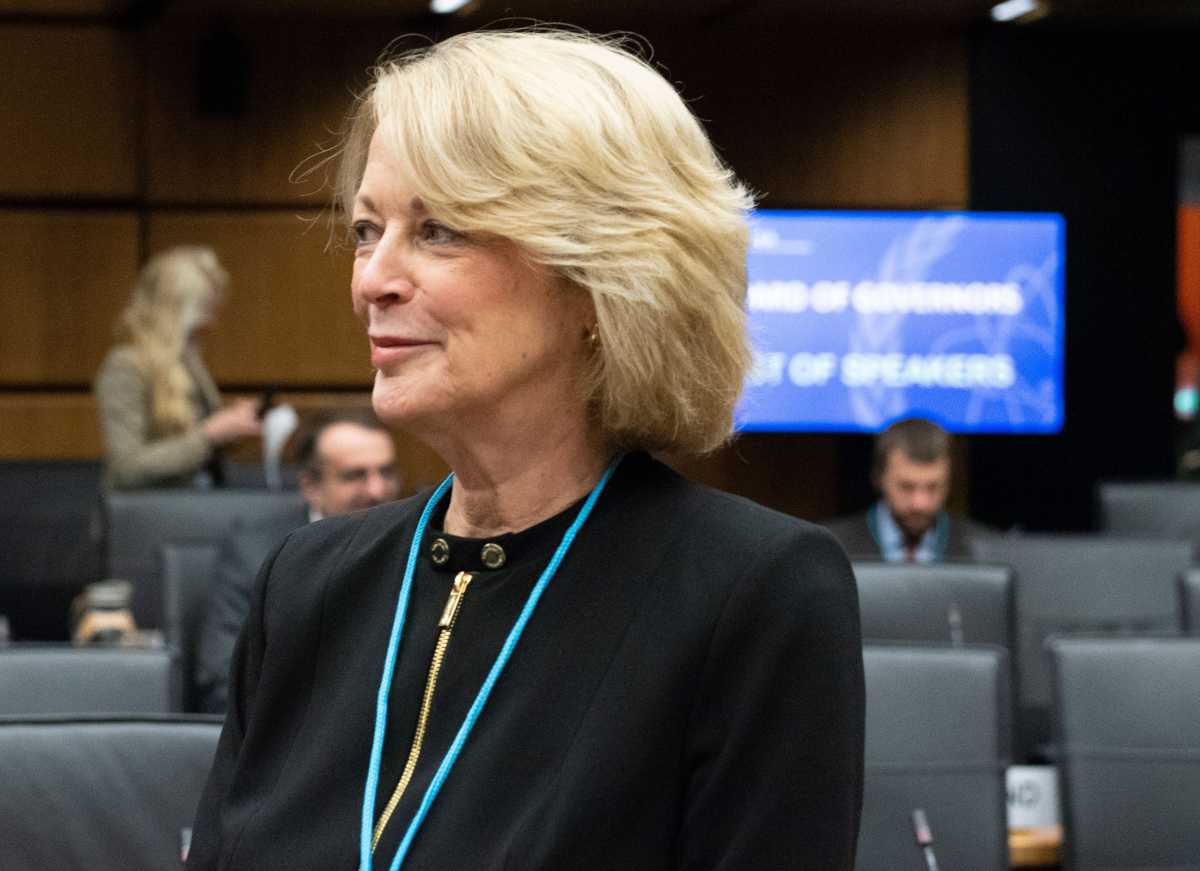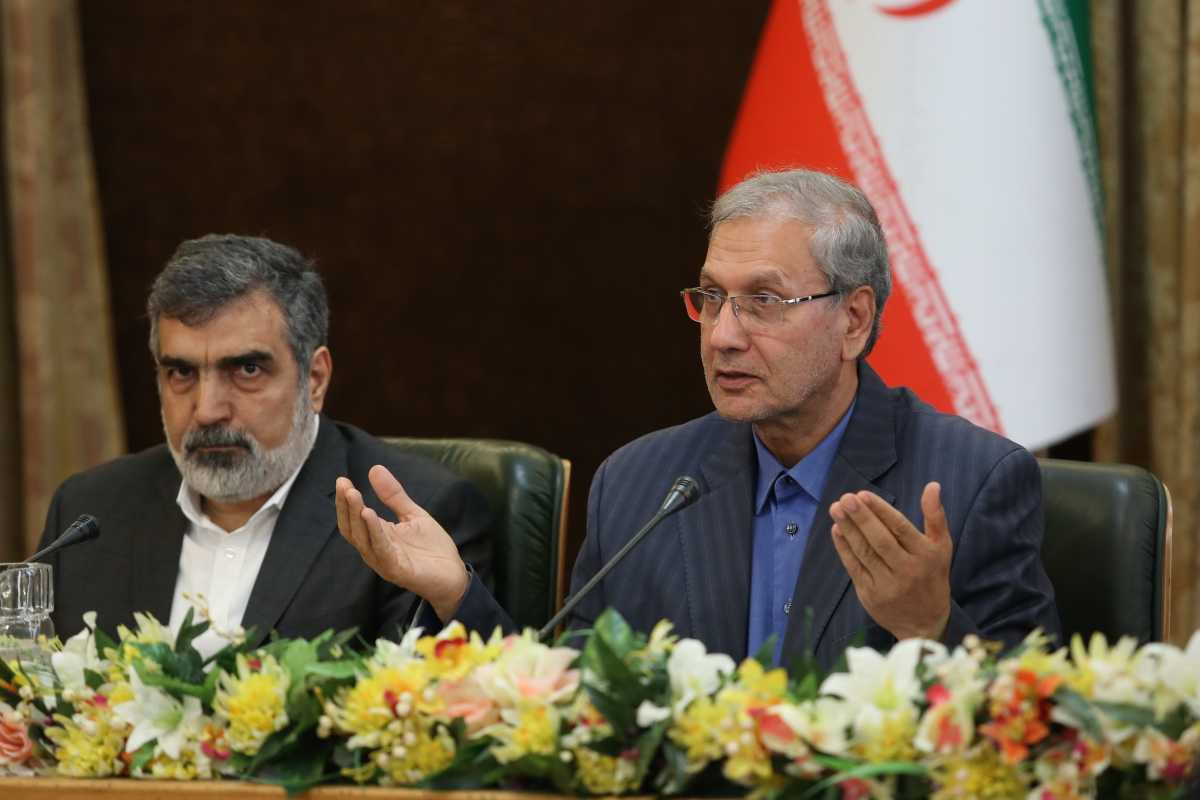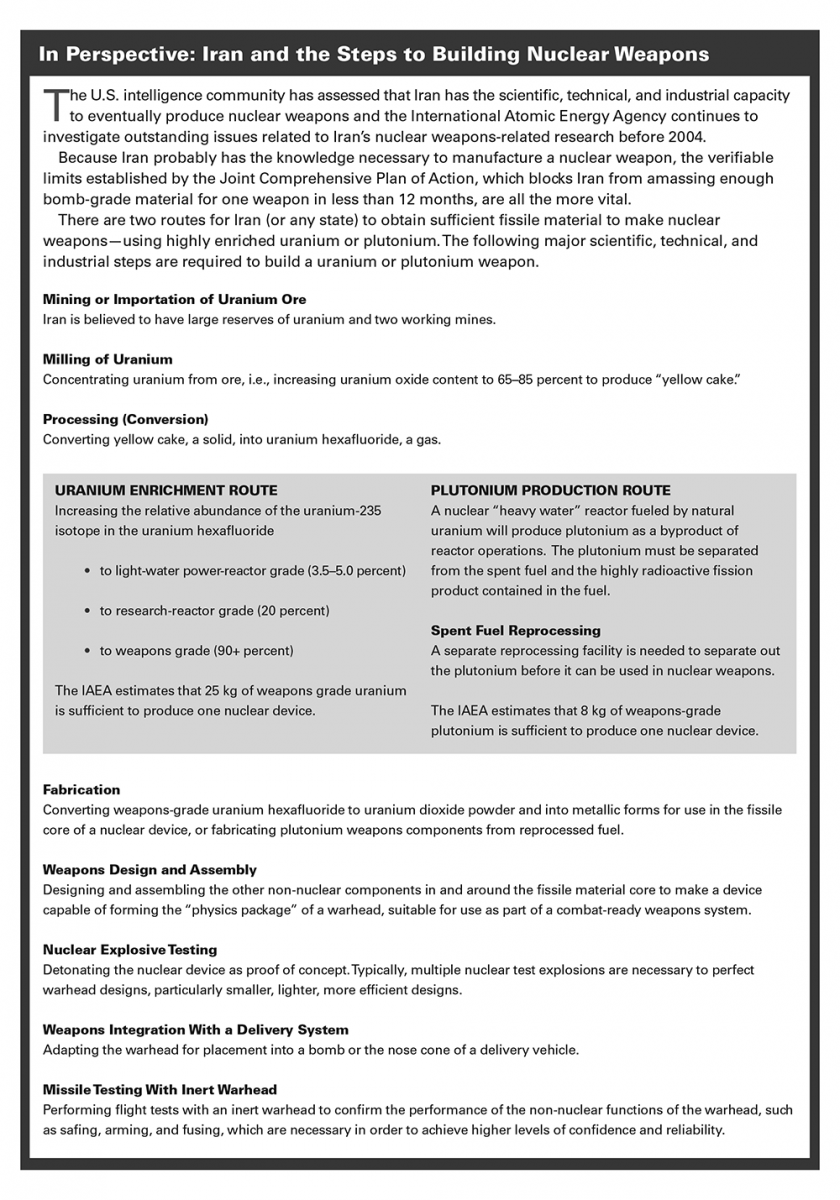With Further Nuclear Moves, Iran Seeks to Leverage Promised Sanctions Relief
Iran announced July 8 that it has started enriching uranium at levels in excess of the limit of 3.67 percent uranium-235 set by the 2015 nuclear deal, known as the Joint Comprehensive Plan of Action (JCPOA).
The move is the second troubling retaliatory measure in two weeks by Iran to walk back its compliance with the JCPOA. Last week, Iran exceeded the 300-kilogram limit of its stockpile of low enriched uranium set by the JCPOA.
Iran’s moves to curtail compliance with the JCPOA have long been expected. Iranian President Hassan Rouhani said May 8 that Iran would no longer be bound by the 300-kilogram LEU cap and would exceed the cap on enrichment levels in 60 days if the remaining parties to the nuclear deal did not deliver on sanctions relief.
Iran announced July 1 that it breached the 300-kilogram limit on uranium gas enriched to 3.67 percent (202 kilograms of uranium by weight) and the International Atomic Energy Agency (IAEA) later confirmed that Iran has exceeded the limit.
While Iran’s actions clearly violate the deal, a slight excess of uranium enriched to 3.67 percent does not pose an immediate proliferation risk or significantly reduce the time it would take Iran to produce enough weapons-grade material for one bomb—which is 12 months or more as a result of the combined limits established by the JCPOA. After that, it would take Iran additional time to fabricate a core, fit it with an explosives package, and integrate it into a delivery system. (See our fact file, “In Perspective: Iran and Steps Necessary to Build a Nuclear Bomb.”)
As such, the Iranian actions do not appear to be an attempt to race to acquire nuclear weapons, but rather a calibrated effort to secure economic relief Iran was promised by the other parties to the JCPOA.
The spokesperson for the Atomic Energy Organization of Iran, Behrouz Kamalvandi, said July 7 that Iran notified the IAEA of its intentions and will begin the process of increasing enrichment above 3.67 percent “within the next few hours.” Kamalvandi announced July 8 that the level of Iran’s uranium enrichment has surpassed the 4.5 percent level.
On July 5, Ali Akbar Velayati, an adviser to Iran’s Supreme Leader, suggested that enriching to a level of five percent was necessary for electricity generation at the Bushehr power plant. Other Iranian officials had previously referenced increasing enrichment levels to five percent uranium-235 and to 20 percent uranium-235. Iran enriched uranium to 20 percent before the JCPOA, ostensibly for its Tehran Research Reactor, but currently has no practical need for uranium enriched to either five or 20 percent.
The fuel for Iran’s civil nuclear power reactor at Bushehr is provided by Russia and the JCPOA ensures that Iran can import uranium fuel enriched to 20 percent in specific amounts for its Tehran Research Reactor. The United States has, for now, waived sanctions allowing fuel transfers for both reactors to continue.
But the extent of the proliferation risk depends on how many centrifuges Iran begins to use for higher-level enrichment and how much of the material produced is stockpiled. If Iran produces and stockpiles uranium enriched to either level, it would begin to shorten Iran’s so-called breakout time, or the time it takes to produce enough nuclear material for a bomb, which currently stands at about 12 months.
It does not appear that Iran intends to resume work on the unfinished Arak reactor at this time. President Rouhani initially said May 8 that Iran may restart work at the reactor based on its original design, which would have produced enough plutonium for about two bombs per year.
However, on July 3 he stated that if the remaining parties to the deal meet their JCPOA obligations to assist in modifying the reactor, Iran will refrain from breaching its obligations on Arak. At a June 28 meeting of the JCPOA’s Joint Commission, the parties discussed the positive progress on Arak. (See below for details.)
While the remaining parties to the deal (China, France, Germany, Russia, the United Kingdom, and the EU) have condemned Iran’s decision to breach JCPOA limits, they appear committed to resolving the disputes within the JCPOA.
French President Emmanuel Macron said July 6 that Rouhani agreed to explore “conditions to resume dialogue” on Iran’s nuclear program by July 15, and Macron dispatched a personal diplomatic representative, Emmanuel Bonne, for talks today and Wednesday in Tehran to attempt to dial back the situation.—KELSEY DAVENPORT, director for nonproliferation policy, with DARYL G. KIMBALL, executive director
Other JCPOA Parties and the United States React
The remaining P4+1 parties to the JCPOA all expressed regret over Iran’s decision to breach the uranium stockpile and the 3.67 percent uranium enrichment threshold and urged Tehran to refrain from further actions that violate the accord. In a July 2 statement, the foreign ministers of France, Germany, and the United Kingdom and the High Representative of the European Union, stated that “our commitment to the nuclear deal depends on full compliance by Iran” and said Tehran’s action “calls into question an essential instrument of nuclear nonproliferation.”
 The ministers said they are “urgently considering next steps under the terms of the JCPOA,” in coordination with the other parties. That could include invoking the dispute resolution set up by the deal, although the ministers did not reference that process specifically (see below for details.)
The ministers said they are “urgently considering next steps under the terms of the JCPOA,” in coordination with the other parties. That could include invoking the dispute resolution set up by the deal, although the ministers did not reference that process specifically (see below for details.)
Russia and China more explicitly referenced Tehran’s decision as a reaction to the U.S. sanctions campaign. Geng Shuang, the spokesperson for the Chinese Foreign Ministry, said “U.S. extreme pressure is the root cause” of the current tension and emphasized that Iran’s actions are reversible. He called on all parties to exercise restraint and seek to resolve the issue. Russian Foreign Minister Sergey Lavrov stated that U.S. sanctions “forbade anyone to buy excess low-enriched uranium” and contributed to Iran’s stockpile growth.
Under the JCPOA, Iran can remain below the 300-kilogram limit by downblending enriched uranium to natural levels or transferring it out of the country. However, in May 2019, the United States announced it would no longer waive sanctions on the transfer of enriched uranium. Iran has referenced the U.S. decision as impeding Tehran’s implementation of the JCPOA.
The White House Press Secretary issued a statement July 1 stating that “maximum pressure on the Iranian regime will continue until its leader alters their course of action” and that it was a “mistake” to allow Iran to enrich under the JCPOA. The statement called for restoring “the longstanding nonproliferation standard of no enrichment for Iran.”
A July 1 statement from the State Department made a similar reference, implying that the enrichment prohibition on Iran is derived from an international standard. The United States has long sought to prevent the spread of uranium enrichment and plutonium reprocessing technologies, but that there is no agreed-upon international standard of “no enrichment for Iran.”
Many states, including Iran, argue that there is a “right” to enrichment and reprocessing technology under Article IV of the nuclear Nonproliferation Treaty (NPT). Non-nuclear weapon states do have a right to peaceful nuclear technology under the NPT, but the treaty does not specify whether or not that includes enrichment and reprocessing.
Past UN Security Council resolutions demanded that Iran “suspend” its uranium enrichment program, and imposed sanctions on Iran. Those provisions were designed to push Iran to negotiate over its nuclear activities and cooperate with the IAEA’s investigations into past illicit nuclear activities—all of which Iran has done as part of the JCPOA. Furthermore, the previous UN Security Council resolutions relating to Iran were modified by UNSC Resolution 2231, which recognized and endorsed the JCPOA, which allows Iran to enrich uranium according to strict limitation and increased IAEA monitoring.
The JCPOA’s Dispute Resolution Mechanisms
For now, the remaining parties to the JCPOA – China, the European Union, France, Germany, Russia, and the United Kingdom—are pressing Iran to exercise restraint and continue to cooperate fully with the IAEA but they are not yet seeking to formally reimpose UN and EU nuclear-related sanctions and end their support for the JCPOA.
![U.S. Secretary of State Mike Pompeo attends the UN Security Council meeting on Iran, December 12, 2018. [State Department photo by Ron Przysucha/ Public Domain] U.S. Secretary of State Mike Pompeo attends the UN Security Council meeting on Iran, December 12, 2018. [State Department photo by Ron Przysucha/ Public Domain]](/sites/default/files/images/P5Alerts/USStateDept-UNSC-PompeoDec2018.jpg) If Iran continues to exceed other key JCPOA limits, however, some of the JCPOA states parties may consider doing so. This could trigger the JCPOA’s dispute resolution mechanism that could be utilized to resolve acts of noncompliance with the agreement.
If Iran continues to exceed other key JCPOA limits, however, some of the JCPOA states parties may consider doing so. This could trigger the JCPOA’s dispute resolution mechanism that could be utilized to resolve acts of noncompliance with the agreement.
According to the process laid out in the JCPOA (main text, paragraphs 36 and 37), any state party that believes another state is not meeting its obligations under the deal can refer the issue to the JCPOA’s Joint Commission. The Joint Commission is comprised of the parties to the deal, including the EU, and meets quarterly to oversee its implementation. The United States, having withdrawn from the JCPOA, is no longer a state party.
The process detailed in the JCPOA states that:
- The Joint Commission has 15 days to resolve an issue of noncompliance after the referral is made; although if all parties agree, the timeframe can be extended.
- If the Joint Commission does not resolve the compliance issue, any state can elevate the complaint to the ministers of foreign affairs. The ministers then have 15 days (or longer by consensus) to resolve the concern.
At the request of the state raising the noncompliance issue, or at the request of the state allegedly not in compliance, a three-member Advisory Board can be convened in parallel to the ministerial consideration or instead of ministerial consideration. The state that raised the issue of noncompliance and the accused state each appoint a member and the third is independent. The Advisory Board has 15 days to offer an opinion, which is nonbinding.
- The Joint Commission has five days to consider the Advisory Board’s opinion.
- If the Joint Commission still has not resolved the dispute and the complaining state believes it to “constitute significant non-performance” of JCPOA commitments, the complaining state could notify the Security Council. The notification must include a description of efforts to resolve the issue.
- The Security Council then has 30 days to vote on a resolution to continue lifting UN sanctions as outlined in Resolution 2231, which endorsed the deal and negated prior resolutions on Iran’s nuclear activities. If such a resolution fails to pass, prior Security Council resolutions on Iran will snap back into place (unless the Security Council decides otherwise). The sanctions would not apply retroactively.
U.S. Calls for IAEA Board Meeting on Iran July 10
U.S. Ambassador to the International Atomic Energy Agency (IAEA) Jackie Wolcott called for an emergency meeting of the agency’s Board of Governors to discuss Iran’s nuclear activities. In the July 5 statement announcing the U.S. request, Wolcott noted that it is “essential for the Board to exercise its authority to accurately assess Iran’s implementation of its safeguards obligations and nuclear commitments” and “hold Iran’s regime accountable.” The IAEA announced it will hold the meeting July 10.
 The IAEA Board of Governors, comprised of representatives from 35 member states, approves safeguards agreements and can refer a state to the Security Council if that state is not in compliance with its IAEA safeguards obligations. The IAEA Board referred Iran to the Security Council in 2006 after Tehran failed to comply with the agency’s investigations into undeclared nuclear activities. The IAEA Board does not, however, have the authority to determine if Iran is violating the JCPOA. The reported breach of the JCPOA’s 300-kilogram limit, while concerning, is not an IAEA safeguards violation.
The IAEA Board of Governors, comprised of representatives from 35 member states, approves safeguards agreements and can refer a state to the Security Council if that state is not in compliance with its IAEA safeguards obligations. The IAEA Board referred Iran to the Security Council in 2006 after Tehran failed to comply with the agency’s investigations into undeclared nuclear activities. The IAEA Board does not, however, have the authority to determine if Iran is violating the JCPOA. The reported breach of the JCPOA’s 300-kilogram limit, while concerning, is not an IAEA safeguards violation.
The United States may be requesting an IAEA Board meeting to try build support to refer Iran’s nuclear file back to the UN Security Council, circumventing the JCPOA’s dispute resolution process for taking an issue to the UN.
Having withdrawn from the JCPOA, Washington is no longer a member of the Joint Commission, which is the body set up by the JCPOA to oversee implementation and is most likely to try and address Iran’s breach of JCPOA restrictions or obligations. If the United States tries to trigger the snapback mechanism in Resolution 2231 to reimpose Security Council sanctions on Iran, it is likely that that other JCPOA parties will challenge whether the United States has the legal standing to do so. The provisions in the resolution only allow for participants in the JCPOA to trigger sanctions snapback.
Iran Threatens NPT Withdrawal
Senior Iranian officials reiterated the threat that Tehran may withdraw from the nuclear Nonproliferation Treaty (NPT), ahead of the June 28 JCPOA Joint Commission meeting. According to a June 27 report in The Wall Street Journal, an Iranian official told the Europeans that if the nuclear deal falls apart, Iran may follow the path of North Korea and leave the NPT.
Article X of the NPT allows states to withdraw if “extraordinary events, related  to the subject matter of this Treaty, have jeopardized the supreme interests of its country.” A state must then give three months’ notice to the Security Council explaining the rationale for its withdrawal before the process is complete.
to the subject matter of this Treaty, have jeopardized the supreme interests of its country.” A state must then give three months’ notice to the Security Council explaining the rationale for its withdrawal before the process is complete.
Iran has threatened in the past to withdraw from the NPT. In April, Iranian Foreign Minister Javad Zarif stated that NPT withdrawal is one of the options Iran is considering to respond to the U.S. pressure campaign. Iran also hinted at withdrawal during the May 2019 NPT Preparatory Committee meeting for the treaty’s 2020 Review Conference. During the meeting, Iran said that U.S. pressures to “dismantle the JCPOA” are “detrimental not only to the stability and security in the Middle East region, but to the NPT.” Iran will “adopt appropriate measures to preserve its supreme national interests,” the statement said.
Iranian officials calling for NPT withdrawal may believe that such a threat will increase leverage in negotiations with the remaining P4+1 parties to the JCPOA on sanctions relief, but taking such a drastic step would likely be interpreted as signaling Tehran’s intention to pursue nuclear weapons, and increase Iran’s international isolation on the issue.
The June 27 reference to following North Korea’s path reinforces the perception that if Iran withdraws from the NPT, it may choose to pursue nuclear weapons. North Korea first initiated the withdrawal from the NPT in 1993 but suspended the action for a decade before saying it completed the process in 2003. North Korea was conducting illicit nuclear activities at the time of its attempted withdrawal and later conducted its first nuclear weapon test explosion in 2006. North Korea now possesses an arsenal of an estimated 20-30 nuclear weapons and nuclear-capable ballistic missiles.
Joint Commission Discusses Nuclear Deal
After a June 28 meeting of the Joint Commission, the body set up by the nuclear deal to oversee implementation, Secretary General of the European External Action Services Helga Schmid announced in the chair’s statement that the first INSTEX transactions are being processed. INSTEX is a financial mechanism set by France, Germany, and the United Kingdom, to provide a financial channel for facilitating trade with Iran that bypasses U.S. sanctions.
Schmid, who chaired the Joint Commission meeting, also said additional EU member states were in the process of joining INSTEX and cooperation with Iran on the mechanism “will speed up.” Following the Joint Commission meeting, seven EU states released a statement expressing support for the JCPOA and their interest in participating in INSTEX, as did China.
While progress on INSTEX is positive, it was unsurprising that these steps were not enough to head Iran off from pursuing additional steps to violate the JCPOA July 7. Iranian Foreign Ministry spokesperson Abbas Mousavi said the meeting was the “last chance” for the P4+1 to “see how they can meet their commitments towards Iran.” He said if INSTEX is an “artificial mechanism,” Iran will not accept it. Iran is looking for a route to sell oil, which INSTEX appears unable to facilitate at this time.
The Joint Commission also discussed the nuclear-related commitments during the June 28 meeting in Vienna. The statement said participants “noted good progress” on the Arak reactor conversion project and work at Fordow to establish a research and development center and said that the parties “fully support these nuclear projects” and their “timely completion.”
The United States issued waivers allowing nuclear cooperation on Arak and Fordow to continue without the threat of sanctions violations, but the Trump administration cut the waivers from the 180 days allowed to 90 and said they may be revoked. This raised concerns that progress on these important nuclear cooperation projects required by the JCPOA would slow. Iranian President Hassan Rouhani said July 3 that Iran will resume work on the Arak reactor based on its original design (which would produce enough plutonium for about two bombs per year) if the P4+1 fail to meet their commitments to modify the reactor.
The Joint Commission also agreed to have experts look into “practical solutions” for the export of low-enriched uranium and heavy water. The deal allows Iran to sell low-enriched uranium and heavy water to remain below the caps set by the deal but does not require the P4+1 to facilitate or ensure any sales. The Trump administration refused to renew waivers allowing Iran to sell or transfer low-enriched uranium and heavy water in May, creating this issue.
UN Secretary-General Reports on Resolution 2231
The UN Secretary-General issued his biannual report on the implementation of UN Security Council Resolution 2231, which endorsed the nuclear deal and set restrictions on Iran’s ballistic missile and conventional arms imports and exports.
The June 13 report noted that the Secretariat continued its investigations into several transfers of conventional arms and ballistic missiles from Iran, including systems that the Houthis fired into Saudi Arabia. In several cases, the report concluded that the conventional arms and ballistic missiles were of Iranian origin but could not determine if they were transferred before or after January 2016, when Resolution 2231 came into effect.
In the report, Secretary-General Antonio Guterres expressed his “regret” for the U.S. decision not to renew waivers for nuclear cooperation projects allowed under the JCPOA. He said the U.S. decision “may also impede” Iran’s ability to meet its commitments under the deal and said the actions are “contrary to goals” of the JCPOA and Resolution 2231.
The report also contained an update on the procurement channel, the mechanism set up by the JCPOA through which the Security Council approves any transfer of dual-use materials and technologies to Iran, against U.S. sanctions. Since the prior report in December, two proposals were sent to the procurement channel and the Guterres said that he received no new reports of illicit transfers of dual-use materials in violation of the procurement channel. He also noted that two investigations into alleged illicit transfers of dual-use technologies determined that the actions did not violate Resolution 2231.
He also noted that the Russians have proposed looking into options to secure the procurement channel against any hindrance from U.S. sanctions targeting nuclear activities endorsed by Resolution 2231 but did not mention any specific steps being undertaken at this time. Guterres also expressed his support for efforts by the P4+1 to “to protect the freedom of their economic operators to pursue legitimate business” with Iran.
In Case You Missed It…
- Eric Brewer and Richard Nephew, “Seeing Red in Trump’s Iran Strategy,” Arms Control Today, July/August 2019
- Kelsey Davenport, “The Impact: Iran Breaches Nuclear Deal,” via the United States Institute for Peace Iran Primer, July 8, 2019
- “In His Own Words: Iran’s Foreign Minister Mohammad Javad Zarif,” The New York Times, July 4, 2019
- Gerard Araud and Ali Vaez, “Iran Isn’t Trying to Build a Bomb Tomorrow. It Wants Sanctions Relief,” Foreign Policy, July 2, 2019
- Ellie Geranmayeh and Manuel Lafont Rapnouil, “Meeting the challenge of secondary sanctions,” European Council on Foreign Relations, June 25, 2019
- Ilan Goldenberg, “What a War With Iran Would Look Like,” Foreign Affairs, June 4, 2019

